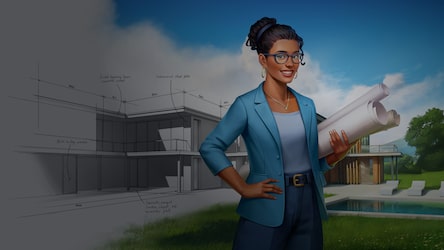Architect Collaboration Tips for Working with Engineers and Project Managers
Architect Collaboration Tips for Working with Engineers and Project Managers
Blog Article
Comprehending the Diverse Career Paths Available for Aspiring Architect
As an ambitious Architect, you have a globe of occupation paths waiting for you. Each path uses special challenges and chances to apply your creative thinking and technological expertise. Whether you're drawn to conventional architecture or the subtleties of lasting style, there's a particular niche that aligns with your interests. Comprehending these diverse options can shape your expert journey, yet which instructions will you select to explore first?
Typical Design: Designing Structures and Frameworks
Typical architecture focuses on designing structures and structures that mix performance with visual appeal. Your layouts can reflect social heritage, showcasing neighborhood traditions while fulfilling modern-day requirements.
You'll create abilities in drafting, model-making, and site evaluation, allowing you to visualize and connect your concepts successfully. Involving with customers, you'll need to understand their vision and translate it into practical layouts.
Furthermore, constructing codes and sustainability techniques are necessary in your work, ensuring your frameworks are environmentally pleasant and risk-free. As you grow in your job, you'll find opportunities in domestic, commercial, and even reconstruction tasks, each offering distinct challenges. Accepting standard style paves the method for a meeting job that admires the past while forming the future.
Urban Planning: Shaping Areas and Public Spaces
As an ambitious Architect, you can play an essential function as an urban planner, transforming how communities connect and operate. By using neighborhood interaction approaches, you'll assure that locals have a voice fit their atmosphere. Plus, incorporating lasting style concepts will assist create rooms that not only satisfy today's requirements however also shield the future.
Role of Urban Planners
While several could assume of designers as the sole visionaries behind structures, metropolitan coordinators play an essential function in shaping the broader landscape of areas and public spaces. By teaming up with numerous stakeholders, you'll assist create parks, transport systems, and residential areas that promote social interaction and access. Your expertise in spatial layout and neighborhood dynamics allows you to picture future growth while protecting cultural heritage.
Area Engagement Approaches
Efficient area interaction strategies are essential for urban planners to ensure that the voices of citizens are listened to and valued in the planning procedure. To cultivate purposeful discussion, you must prioritize open forums and workshops where neighborhood members can share their ideas and problems. By proactively listening and incorporating comments, you'll produce rooms that show the community's needs, inevitably leading to even more successful and sustainable metropolitan atmospheres.
Sustainable Design Concepts
When designing city areas, integrating sustainable layout concepts is essential for creating settings that thrive both environmentally and socially. You need to begin by focusing on energy efficiency, making use of products that decrease waste and promote recycling. Think about integrating environment-friendly spaces, like yards and parks, to enhance biodiversity and enhance air high quality. Promoting walkability and public transport can lessen reliance on automobiles, cultivating a much healthier neighborhood.
Designing with water conservation in mind is likewise vital-- think of rain yards and permeable surface areas to handle stormwater. Involving community participants during the planning procedure warranties that the areas you create fulfill their needs and encourage social interaction. By embracing these principles, you'll contribute to vivid, lasting urban landscapes that benefit every person.

Landscape Design: Developing Sustainable Outdoor Environments
As you check out landscape design, you'll uncover necessary layout principles that create gorgeous and practical outdoor areas. Lasting methods play an essential function in making sure these atmospheres grow while decreasing environmental impact. Plus, you'll locate a variety of career chances that allow you to make an actual distinction in how people connect with nature.
Layout Principles in Landscape
Comprehending design principles in landscape design is crucial for producing lasting outdoor environments that balance with nature. You'll need to contemplate components like equilibrium, scale, and percentage to ensure your layouts really feel cohesive and inviting. Additionally, pay attention to seasonal modifications, creating with products that enhance the surroundings year-round.
Lasting Practices Review
Lasting practices in landscape architecture not only focus on aesthetic appeals however also prioritize ecological health and source conservation. By integrating indigenous plants, you improve biodiversity and minimize the requirement for chemical plant foods and chemicals. Executing reliable watering systems assists conserve water and reduces drainage, securing close-by ecosystems. You can develop rooms that promote dirt health and wellness, such as exercising and utilizing organic products permaculture principles. In addition, integrating green framework, like rain yards and permeable sidewalks, help in stormwater administration and decreases city warm. When you produce exterior settings with sustainability in mind, you add to a healthier world and give rooms that cultivate area link. Eventually, these practices assure your layouts benefit both individuals and the environment for many years to find.
Career Opportunities Expedition
With a strong structure in lasting techniques, landscape style supplies a selection of occupation paths that enable you to make a meaningful influence on the atmosphere. You might work as a landscape developer, creating cosmetically pleasing and useful try this web-site exterior areas, or focus on ecological repair, aiding to revive damaged communities. Urban coordinators often team up with landscape designers to produce environment-friendly rooms in city settings, boosting city livability. If you're passionate about education, consider coming to be a landscape style educator, motivating future generations. Additionally, you might collaborate with nonprofits concentrated on ecological sustainability or take part in research study to introduce new methods. Each path not only forms stunning atmospheres yet additionally promotes a healthier planet for future generations.
Lasting Design: Concentrating On Eco-Friendly Practices
As you discover your job in architecture, embracing eco-friendly techniques can set you apart in a competitive area. Lasting style concentrates on creating buildings that lessen ecological influence while enhancing resident health. By integrating eco-friendly products, energy-efficient systems, and lasting building methods, you'll add to a greener future.
Start by obtaining knowledge of environment-friendly certifications like LEED or BREEAM, which can strengthen your qualifications. Take into consideration just how natural light, ventilation, and thermal effectiveness can enhance design. Work together with engineers and ecological consultants to introduce solutions that reduce waste and save sources.
Don't forget the significance of neighborhood involvement-- appealing neighborhood stakeholders can influence styles that harmonize with the setting. As customers significantly prioritize sustainability, your competence in eco-friendly techniques will certainly not only bring in projects but likewise satisfy your interest for responsible style. Embrace this important facet of the career, and view your job thrive.
Historical Preservation: Protecting and Bring Back Social Heritage
While you start on your building trip, think about the vital duty of historical conservation in preserving our social heritage. This area concentrates on the security and remediation of substantial buildings, websites, and structures that inform the tales of our past. By taking part in historic preservation, you'll aid guard the building tradition that shapes community identity.
As a historical conservation Architect, you'll examine historic importance and analyze the problem of frameworks. You'll work very closely with historians and conservationists to ensure genuine repair strategies are employed. This profession path allows you to mix imagination with research, enabling you to make solutions that value initial materials and workmanship.
Your work not just adds to sustainability by reusing existing structures yet additionally fosters a feeling of pride within areas. Embracing this path will certainly assist you become a guardian of history, maintaining the stories and aesthetics that enrich our lives.
Inside Architecture: Enhancing Indoor Spaces
Historical conservation and indoor architecture both share a dedication to enhancing the built setting, however they concentrate on different elements. While historic preservation highlights preserving a structure's cultural and historical value, interior style nos in on maximizing interior spaces for functionality and aesthetic appeals.
As an ambitious Architect, you'll locate that interior architecture allows you to mix creative thinking with technological abilities. You'll design areas that not only look excellent but additionally promote comfort and performance. This field involves recognizing just how light, color, and products connect within an area, affecting mood and use.
You'll service numerous tasks, from residential homes to business offices, ensuring that each atmosphere meets the needs of its passengers. By focusing on individual experience, you can transform insides right into useful and motivating spaces, making a considerable effect on just how individuals interact with their environments. Embrace the chance to boost indoor environments and form the way individuals work and live.
Industrial Layout: Merging Performance With Visual Appeals
Commercial style plays a necessary role in producing products that effortlessly blend aesthetic appeals with functionality, ensuring that what you make use of everyday is not only aesthetically attractive however additionally sensible. As a hopeful Architect, you can involve yourself in this field, concentrating on creating everything from furniture to consumer electronic devices. Your work entails comprehending customer needs, products, and making processes, allowing you to produce cutting-edge remedies that enhance everyday experiences.
In commercial design, you'll often work together with producers, engineers, and marketing professionals, making visit this site sure that your layouts are not only attractive yet additionally feasible. You'll learn to stabilize type and function, focusing on use without giving up design. By developing your abilities in laying out, 3D modeling, and prototyping, you'll be fully equipped to bring your ideas to life. This profession course supplies a vibrant setting where imagination fulfills practicality, making it a rewarding selection for architects interested in shaping the products of tomorrow.
Frequently Asked Concerns
What Educational Qualifications Do I Need to Come To Be a Designer?
To become a designer, you'll require a professional level in design, generally a Bachelor's or Master's. Furthermore, you'll have to complete a teaching fellowship and pass the Architect Registration Examination to practice legitimately.
Are There Certification Demands for Different Building Job Paths?
Yes, there're certification requirements for different architectural paths. Architect. You'll require to pass tests, complete teaching fellowships, and sometimes go after specialized training, relying on your chosen emphasis, like landscape style, city design, or historic preservation
What Software Skills Are Important for Engineers Today?

Exactly How Can I Gain Practical Experience While Studying Architecture?
You can get useful experience by interning at architectural companies, taking part in layout competitions, volunteering for area tasks, or collaborating with classmates on real-world tasks. These possibilities improve your skills and build beneficial links in the market.
What Job Opportunities Exist Outside Traditional Architecture Firms?
You can explore different job possibilities outside reference standard style firms, like urban planning, interior layout, landscape style, construction management, genuine estate advancement, or even duties in sustainability consulting. Each deals special obstacles and incentives.
Whether you're attracted to conventional design or the nuances of lasting design, there's a particular niche that aligns with your rate of interests.When developing urban areas, incorporating sustainable style concepts is essential for producing environments that thrive both ecologically and socially.As you explore landscape design, you'll discover crucial design principles that produce beautiful and useful exterior rooms.Recognizing design concepts in landscape style is crucial for developing sustainable outdoor settings that integrate with nature.In commercial design, you'll usually team up with online marketers, engineers, and producers, ensuring that your styles are not only stunning but likewise feasible.
Report this page